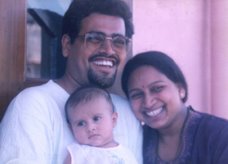In today's fiercely competitive world, innovation, although crucial for personal and organic growth, is found to be difficult to sustain. Difficulties arise because most persons and organizations tend to view deviations from institutionalized organizational practices as mistakes that can only detract from overall organizational performance. Yet, to sustain innovation, some deviation is definitely required.
Spence Silver, a scientist at 3M, was busy doing his work when he stumbled upon a strange substance – a glue that did not stick. Most would have considered this to be a mistake, but not Silver. Looking at the substance under the microscope, Silver thought that the material was beautiful, and, so, decided to pursue its commercial application. Upon being asked if he had made a mistake, Silver responded that he had stumbled upon a "solution looking for a problem".
Indeed, it is to 3M's credit that it allowed Silver to carry this strange glue forward. The celebrated Post-it Note pads were invented on the idea of a glue that does not stick, and they turned out to be the 3M Corporation's most successful product. This vignette illustrates that quite often we stumble on creative solutions much before we are confronted by yet to come problems.
Creativity is all about visioning questions before they get asked and applying the solution that already lies besides us. We must see the potential in what may seem to be a mistake. We must develop our tolerance for ambiguity, by seeing the unseen dimensions to a situation that seems a dead-end, but is in reality just a cul-de-sac. We need to notice the "silver" lining that borders the dark cloud!
Mistakes are quite often problem-searching solutions
Look beyond the obvious to "develop new dimensions "
Monday, February 26, 2007
Monday, February 19, 2007
MAN OF STEEL…
Jamsetji Tata wanted to make textiles in Nagpur in the 1800s with the cotton grown there. Nagpur had no textile industry then, and in Manchester Jamsetji was told that Nagpur's weather was not suitable as it was too dry. He said, 'Alright, I will bring the Manchester weather to Nagpur.' He imported humidifiers and started India's first textile mill in 1874.
Jamshetji started the Tata Iron and Steel Company and wanted to export steel rails to Britain. A Britisher called Sir Frederick Upcourt scoffed, 'If Tatas make steel rails to British specifications, I will undertake to eat every pound of rail that they make.' History stands testimony to the fact that Tatas did manage to make steel rails and export them to Britain. No accounts are available about Upcourt’ tryst with gastric challenges. In fact, World War II British tanks were called Tatanagars because the steel was made in Tatanagar.
Jamsetji pursued his dreams, put together a team, raised the capital, created a product, and mainstreamed it. He did it sitting in India 125 years ago when India's technical capabilities were far less than they are now. When you dream a big dream, surely some of it gets translated into reality. If you do not dream at all, what do you finally get in reality? A century ago, Jamsetji took some foreign visitors to the Majestic Hotel in Mumbai but was denied entrance because he was an Indian. Jamsetji simply resolved to build a hotel that was even finer, and which would not discriminate against people based on colour or race.
Say ‘tata’ and ‘bye-bye’ to the same old way,
“develop new dimensions” to seize the day!
Regards
Pravin
Jamshetji started the Tata Iron and Steel Company and wanted to export steel rails to Britain. A Britisher called Sir Frederick Upcourt scoffed, 'If Tatas make steel rails to British specifications, I will undertake to eat every pound of rail that they make.' History stands testimony to the fact that Tatas did manage to make steel rails and export them to Britain. No accounts are available about Upcourt’ tryst with gastric challenges. In fact, World War II British tanks were called Tatanagars because the steel was made in Tatanagar.
Jamsetji pursued his dreams, put together a team, raised the capital, created a product, and mainstreamed it. He did it sitting in India 125 years ago when India's technical capabilities were far less than they are now. When you dream a big dream, surely some of it gets translated into reality. If you do not dream at all, what do you finally get in reality? A century ago, Jamsetji took some foreign visitors to the Majestic Hotel in Mumbai but was denied entrance because he was an Indian. Jamsetji simply resolved to build a hotel that was even finer, and which would not discriminate against people based on colour or race.
Say ‘tata’ and ‘bye-bye’ to the same old way,
“develop new dimensions” to seize the day!
Regards
Pravin
Monday, February 12, 2007
STEP AHEAD
There are three kinds of people in the world:
Those who are movable.
Those who are immovable.
And those who move.
Since the first Monday of 2004, the Monday Muse series has been dedicated to the annual themes of the National Presidents of JCI-India. Yours truly has been fascinated by the various dimensions that are inherrent in the themes and the multiple possibilities for use in training programs. However, my first effective tryst with the themes came in 2002, with Harish Kumar's theme: STEP AHEAD.
Along a night journey from Khed to Goa, Harish explained me the three dimensions of his theme. The first dimension was obvious: of progressive action. The second dimension he explained as the STEP that lay AHEAD: of visioning of the future and thus preparing for it. The third dimension was STEP-A-HEAD: of the appropriate sharing of the various steps of responsibility as well as authority between the members of your team.
All these dimensions are inspiring and help one plan our actions, articulate our vision and develop our teamworking skills. Yours truly benefited immensely from putting to use the multiple dimensions in such themes, first in my own life, then as a HRD trainer and now as a motivational writer. We are surrounded by many motivational slogans and quotes. We need to see the various dimensions and use them to develop our attitudes and approaches.
the best of slogans are not incidental innovation
use them to the fullest to "develop new dimensions"
Those who are movable.
Those who are immovable.
And those who move.
Since the first Monday of 2004, the Monday Muse series has been dedicated to the annual themes of the National Presidents of JCI-India. Yours truly has been fascinated by the various dimensions that are inherrent in the themes and the multiple possibilities for use in training programs. However, my first effective tryst with the themes came in 2002, with Harish Kumar's theme: STEP AHEAD.
Along a night journey from Khed to Goa, Harish explained me the three dimensions of his theme. The first dimension was obvious: of progressive action. The second dimension he explained as the STEP that lay AHEAD: of visioning of the future and thus preparing for it. The third dimension was STEP-A-HEAD: of the appropriate sharing of the various steps of responsibility as well as authority between the members of your team.
All these dimensions are inspiring and help one plan our actions, articulate our vision and develop our teamworking skills. Yours truly benefited immensely from putting to use the multiple dimensions in such themes, first in my own life, then as a HRD trainer and now as a motivational writer. We are surrounded by many motivational slogans and quotes. We need to see the various dimensions and use them to develop our attitudes and approaches.
the best of slogans are not incidental innovation
use them to the fullest to "develop new dimensions"
Monday, February 5, 2007
BURY ADVERSITY!
An old farmer had a mule that fell into his unused well. The water was not very deep, so the mule was able to stand on the bottom. After assessing the situation, the farmer sympathized with the mule but decided that neither the mule nor the well was worth saving. The farmer called his neighbours together and told them what had happened and enlisted them to help haul mud to bury the old mule in the well and put him out of his misery.
Initially the mule was hysterical, but as the farmer and his neighbors continued to shovel mud on his back, a thought struck him. It dawned on the mule that every time a shovel load of mud landed on his back he would shake it off and step up. This he did, blow after blow of mud hitting his back. Shake it off and step up...Shake it off and step up... Shake it off and step up. The mule repeated this act repeatedly to encourage him no matter how painful the blows or distressing the situation seemed, the old mule fought panic and just kept on shaking it off and stepping up. It was not long before the old mule, battered and exhausted, stepped over the wall of the well.
What had seemed would bury him actually saved him because of the manner in which he handled his adversity. Ditto with life. If we face our problems, respond to them positively, and refuse to give in to panic, bitterness or self-pity...the adversities that come along to bury us often have within them the very real potential to benefit us.
Every adversity is actually an opportunity in disguise
“develop new dimensions” to overcome and arise
Initially the mule was hysterical, but as the farmer and his neighbors continued to shovel mud on his back, a thought struck him. It dawned on the mule that every time a shovel load of mud landed on his back he would shake it off and step up. This he did, blow after blow of mud hitting his back. Shake it off and step up...Shake it off and step up... Shake it off and step up. The mule repeated this act repeatedly to encourage him no matter how painful the blows or distressing the situation seemed, the old mule fought panic and just kept on shaking it off and stepping up. It was not long before the old mule, battered and exhausted, stepped over the wall of the well.
What had seemed would bury him actually saved him because of the manner in which he handled his adversity. Ditto with life. If we face our problems, respond to them positively, and refuse to give in to panic, bitterness or self-pity...the adversities that come along to bury us often have within them the very real potential to benefit us.
Every adversity is actually an opportunity in disguise
“develop new dimensions” to overcome and arise
Subscribe to:
Posts (Atom)


